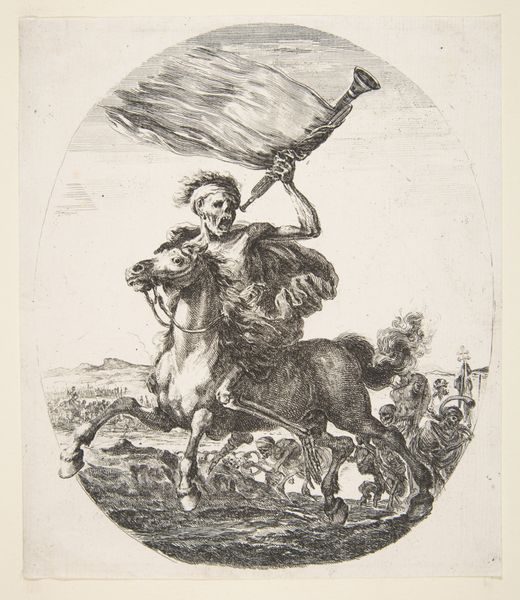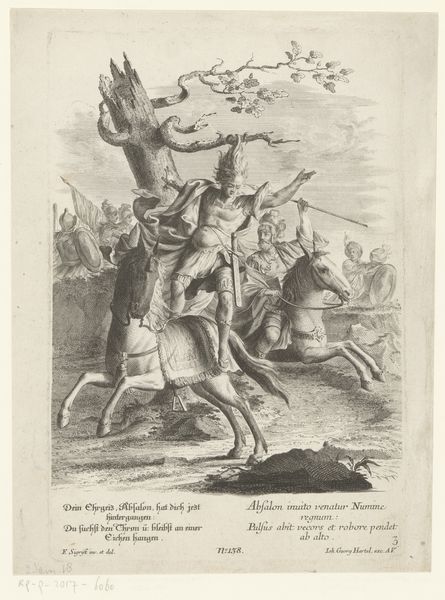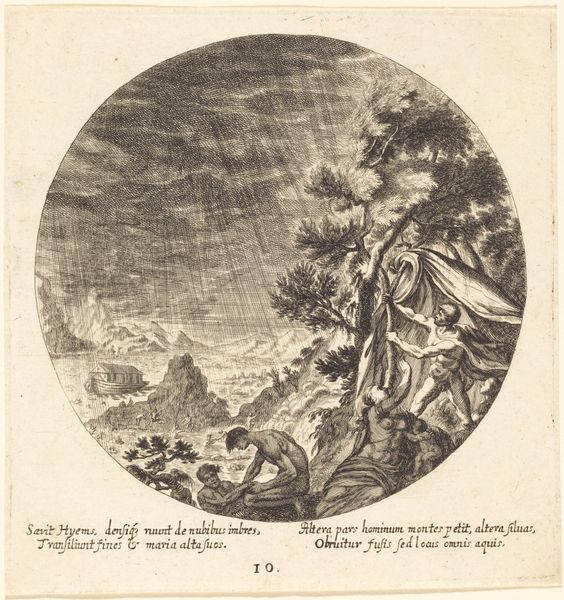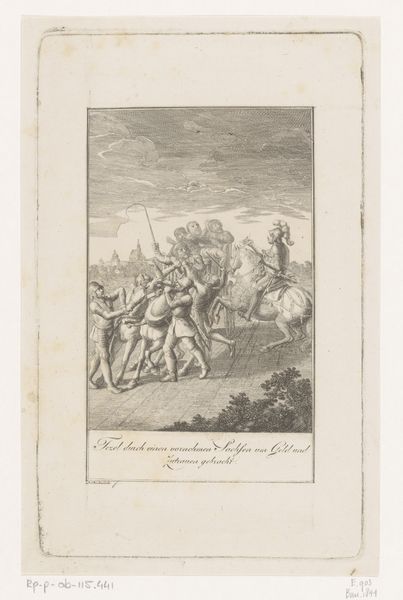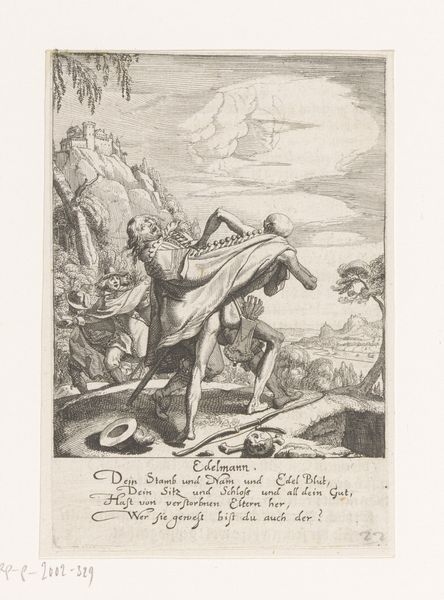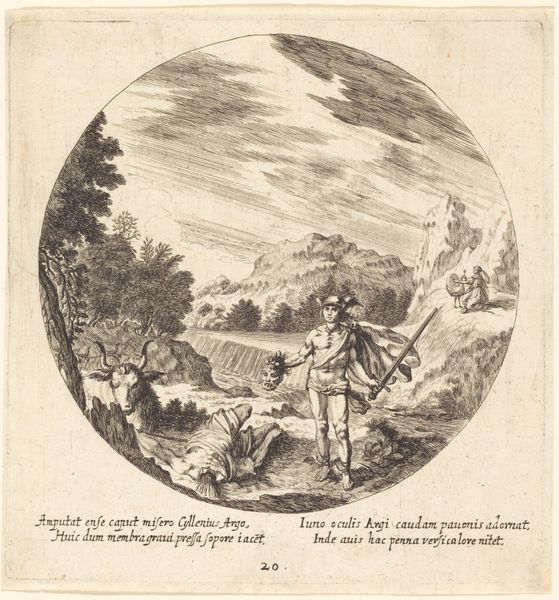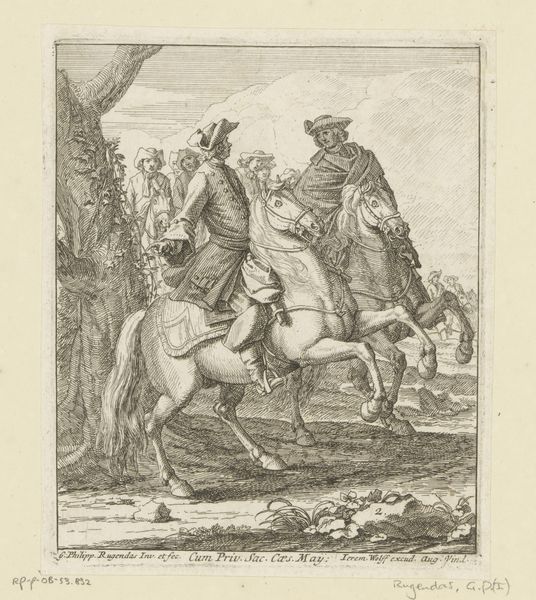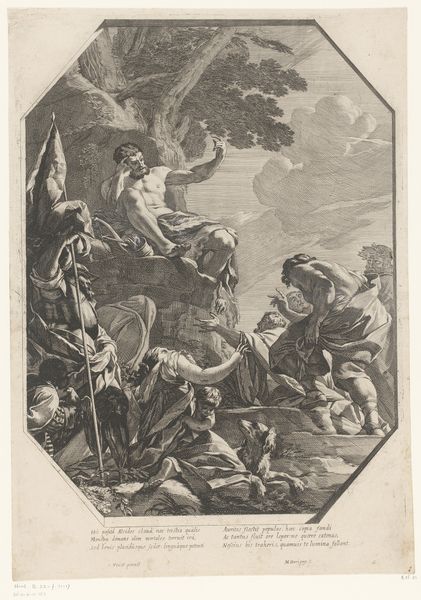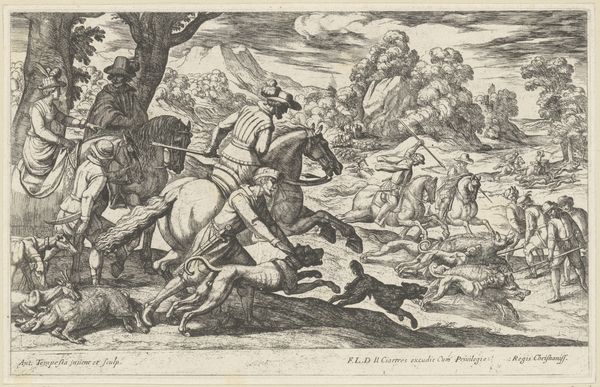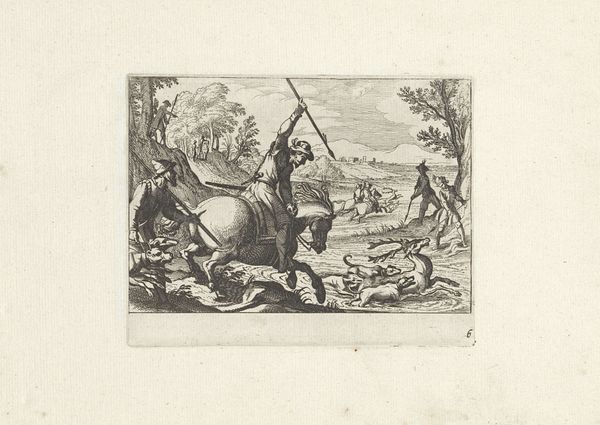
print, engraving
#
baroque
# print
#
landscape
#
figuration
#
history-painting
#
engraving
Dimensions: overall: 15 x 14 cm (5 7/8 x 5 1/2 in.)
Copyright: National Gallery of Art: CC0 1.0
Curator: This is Georg Andreas Wolfgang the Elder’s 1665 engraving, "Deucalion and Pyrrha Land on Parnassus." The composition is quite striking, wouldn’t you agree? Editor: It’s arresting. I’m immediately drawn to the contrast between the smooth sky and choppy waters; the delicate lines used in the engraving certainly contribute to that dynamic tension. Tell me more about Wolfgang's process? Curator: Wolfgang was known for his meticulous use of engraving. The lines here, dictating both form and shadow, exemplify the period’s formal ideals. The swirling water contrasts sharply with the calm, classically rendered figures. The use of hatching and cross-hatching, it produces remarkable tonal variations. Editor: Thinking about production, I find the sheer labor embedded in these tiny, precise cuts absolutely staggering. Considering his access to different tools and inks, how might these choices impact the final impression? The materials would certainly have impacted its reach and preservation, not only as fine art but as reproduced images for wider dissemination. Curator: Intriguing points! Indeed, printmaking allowed stories and aesthetics to circulate more freely. Consider the scene itself; it is pulled from Ovid’s Metamorphoses. Look at Neptune dominating the waters in the print and this speaks to the baroque interest in classical themes filtered through contemporary anxieties about power, religion, and fate. Note his positioning; it commands not only the natural world but the composition. Editor: Absolutely. Furthermore, consider that the visual narratives of figures are inherently connected to labor. Wolfgang’s piece, like any act of representation, exists through an established tradition. We can’t overlook the social implications; the cost and the production involved are deeply meaningful when contextualizing its art. What does that suggest about Baroque society's value placed on visual knowledge? Curator: That really puts another spin on the role this image would have played. It is no longer only about beauty, or narrative, it has deep social function to teach and engage with a certain segment of the population, isn’t it? The materiality, and its relationship to the symbolic and thematic are very much intertwined. Editor: Precisely. An artistic print embodies not only technical prowess, as well as tangible material culture. So very captivating in many respects.
Comments
No comments
Be the first to comment and join the conversation on the ultimate creative platform.
